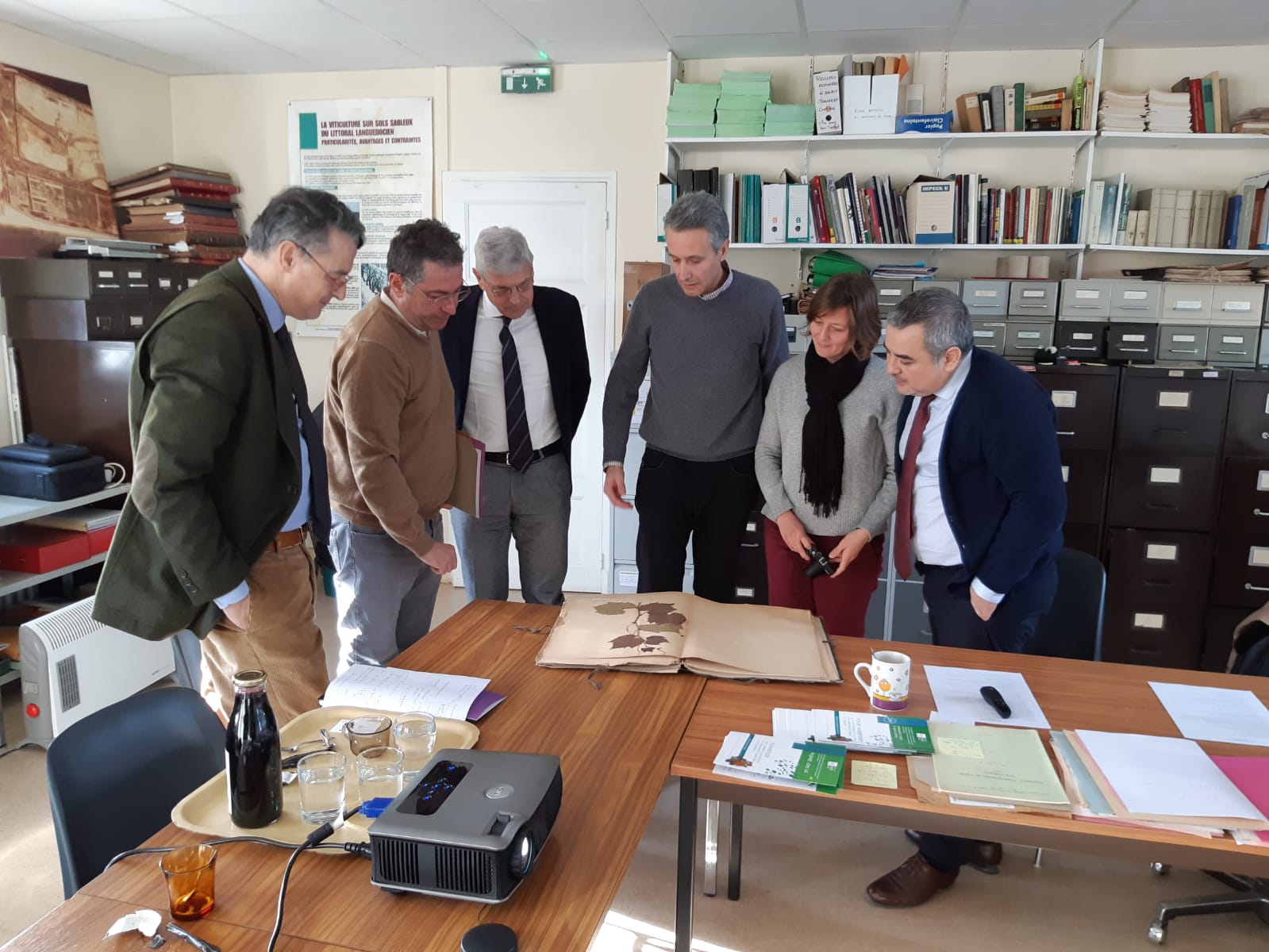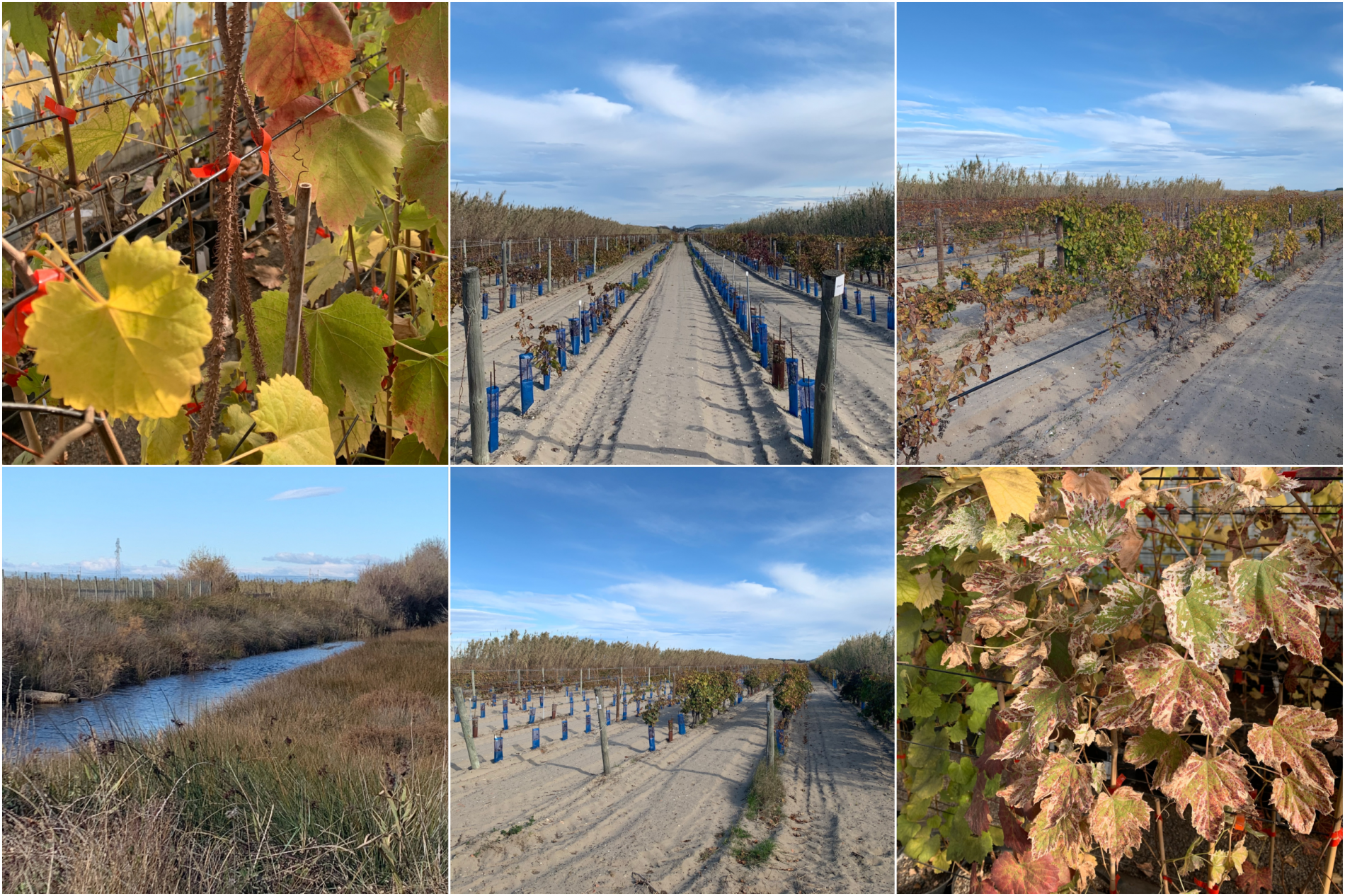The Grapevine Biological Resources Centre (CRB-Vigne), an experimental unit of the French National Institute for Agricultural Research (INRA), was started 140 years ago in Montpellier and is now composed of 8,000 accessions from all vine-growing countries. It preserves a great diversity of vine varieties in addition to rootstocks, hybrids and species related to Vitis vinifera. It is in fact dedicated entirely to the preservation, characterisation and development of grapevine genetic resources.
As part of the work being advanced by the OIV GENET – Genetic Resources and Vine Selection – Expert Group, which belongs to the “Viticulture” Commission (see the OIV Scientific and Technical Committee organisation chart), representatives of the Organisation visited the Vassal-Montpellier CRB-Vigne.
In particular, OIV Director General Pau Roca, GENET Group President Luigi Bavaresco, and “Viticulture” Unit Head Alejandro Fuentes Espinoza were able to meet Cécile Marchal, Director of CRB-Vigne, and experts Jean-Michel Boursiquot (Montpellier SupAgro, UMR AGAP) and Thierry Lacombe (INRA Montpellier, UMR AGAP).

Standing together on the preservation and protection of the global genetic heritage of grapevines
The objectives of CRB-Vigne are also a priority for the OIV, specifically with regard to certain actions undertaken by the “Viticulture” Commission, through its GENET Expert Group.
During the visit, the vital role that the OIV must play in the preservation and protection of grapevine genetic heritage at the international level was raised.
In this sense, several points were brought up:
- Vitis vinifera subsp. sylvestris or Lambrusco. This subspecies, regarded as the ancestor of Vitis vinifera, is classified as protected in France, since it is considered endangered. It is also at risk of disappearance in other countries. Lambrusco plays the role of a genetic reservoir, which today is vital for the maintenance of biological diversity in vineyards worldwide, particularly in the face of disease and/or their adaptation to future climate shocks. The OIV is thus contemplating carrying out an action to promote the maintenance and preservation of Lambrusco internationally.
- Also with the objective of preservation, the OIV should play an essential role in the maintenance/preservation of documentary resources for ampelographic collections at the global level. The OIV is also considering an action that will allow the format of documentary resources for ampelographic collections to be adapted to new practices related to the digital revolution, in order to facilitate access to all of this knowledge, and thus offer new opportunities to actors in the field.
- Last but not least, the final point raised was the action under way within the GENET Group relating to OIV descriptors for the Vitis species. Historically a scientific and technical leader in the description of Vitis varieties, the OIV is currently updating these descriptors.
The description of varieties and ampelography in particular remain a fundamental tool in the viticulture field, giving different actors in the vitivinicultural sector a better choice of productive varieties with which to face up to new environmental challenges and climate change.
The Director General hopes that these actions become a major priority for the OIV and the “Viticulture” Commission, in a sector that now needs more and more diversified tools and responses on different scales to continue its development.
